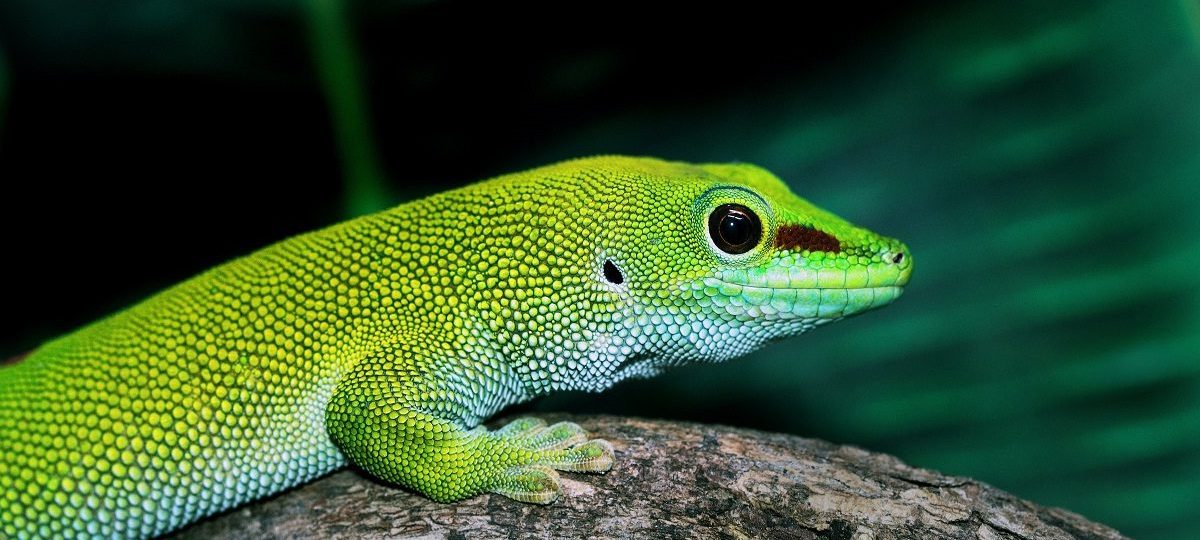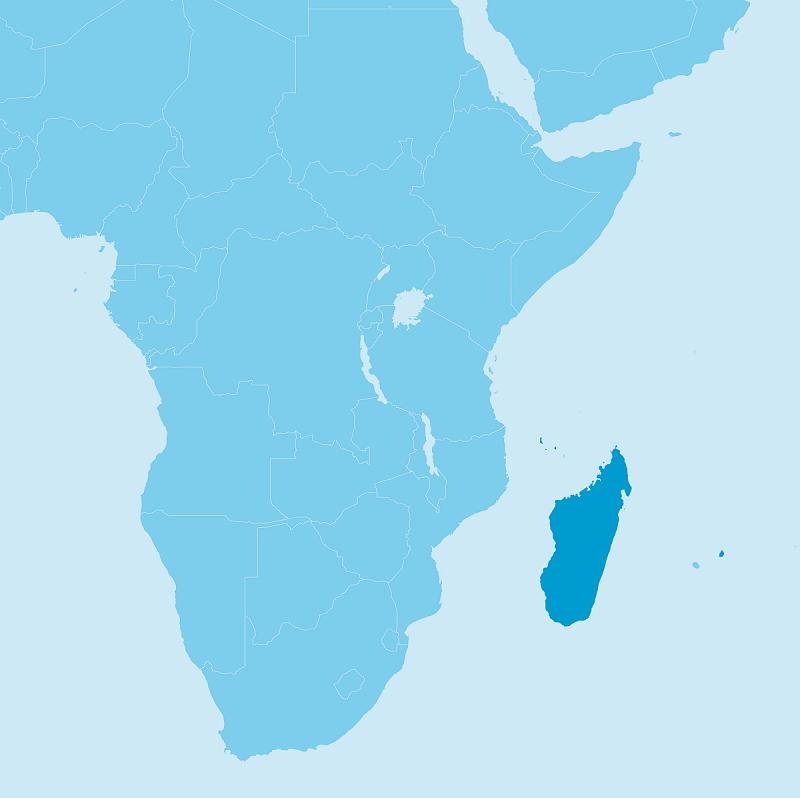Header photo: Madagascar day gecko Ⓒ David Clode on Unsplash
Madagascar and the Indian Ocean Islands possess an astounding number of species, many of which only exist there (endemic species). Madagascar alone is home to over 11,000 endemic plant species, five families of birds, five families of primates and two families of freshwater fish found nowhere else on the planet. In addition to its incredible species diversity, the hotspot provides millions of people with fresh water and other ecosystem services that are essential to their survival. Due to agricultural practices, hunting, illegal wildlife trade, tourism and climate change, the islands have a very high level of degraded natural ecosystems.
Supported by the CEPF, IUCN NL forms the Regional Implementation Team (RIT) together with partners from Madagascar, Comoros, Mauritius and the Seychelles. As a RIT, we support the development and oversight of a portfolio of 80 to 100 grants to non-governmental organisations, community-based organisations, academic institutions, private companies and other organisations on the islands.
About the Critical Ecosystem Partnership Fund
CEPF fills a unique, strategic role in addressing the biodiversity and climate crises by mobilizing and empowering civil society — nongovernmental organisations, communities, Indigenous peoples groups, universities and more — to protect the world’s biodiversity hotspots. Since 2001, CEPF has catalysed enduring, locally led biodiversity conservation through over US$277 million in grants to more than 2,600 organizations in 109 developing and transitional countries. Results include more than 16 million hectares of formal protected areas established, over 1,025 threatened species supported, and more than 4,900 communities benefiting. Learn more at www.cepf.net, Facebook, Instagram and LinkedIn.
The Critical Ecosystem Partnership Fund (CEPF) is a joint initiative of l’Agence Française de Développement (AFD), Conservation International, the European Union (EU), Fondation Hans Wilsdorf, the Global Environment Facility, the Government of Canada, the Government of Japan, and the World Bank. Its fundamental objective is to ensure that civil society is engaged in biodiversity conservation.
Thanks to funding from the Green Climate Fund (GCF) through AFD as an accredited entity for the GCF, and from the EU through AFD as a fiduciary agent, CEPF has established and manages a 10-year program of US$50 million to support civil society organizations in promoting ecosystem-based adaptation in Madagascar and the Indian Ocean Islands Biodiversity Hotspot. Under the auspices of the Ministries of Environment in the Comoros, Environment and Sustainable Development in Madagascar, Finance, Economic Planning and Development in Mauritius, and Agriculture, Climate Change and Environment in the Seychelles, the program’s activities are being implemented in the Comoros, Madagascar, Mauritius, and the Seychelles. Madagascar receives additional support from the Franklinia Foundation for the conservation of Madagascar’s endangered trees.
Madagascar and the Indian Ocean Islands Biodiversity Hotspot
Because Madagascar and the continental Seychelles broke off from the Gondwanaland supercontinent more than 160 million years ago, the islands are a living example of species evolution in isolation. Madagascar, which makes up about 95 percent of the hotspot‘s land area, possesses an astounding 11,200 endemic plant species. This endemism is not limited to plants: the island is home to five families of birds, five families of primates and two families of freshwater fish found nowhere else on the planet. New species are being discovered at a rapid rate in Madagascar: 22 new mammal species and subspecies have been described in the past 15 years.
Convention on Biological Diversity (2009)‘Ecosystem-based adaptation is the use of biodiversity and ecosystem services as part of an overall adaptation strategy to help people to adapt to the adverse effects of climate change.’
Ecosystem-based adaptation to climate change impacts
Healthy ecosystems such as intact forests, wetlands and coastal areas provide many benefits to local communities, including firewood, clean water, medicines, shelter and food. They can also form physical barriers against extreme weather events such as cyclones and storm surges. Biodiverse forests, for example, can protect roads and other infrastructure from erosion and landslides.
CEPF wants to empower communities and civil society to improve the resilience of species, ecosystems, and humans to climate change. One of the investment priorities within this grants programme is therefore to implement Ecosystem-based Adaptation (EbA) actions, including agroforestry and ‘climate smart agriculture’, eradication of invasive species, restoration of degraded watersheds and coastal ecosystems, and promotion of sustainable management of coastal and terrestrial ecosystems. More about this topic can be found in the Ecosystem Profile.
Ecosystem Profile Madagascar and Indian Ocean Islands
CEPF’s conservation investment is guided by the ‘Ecosystem Profile’. This includes specific strategic directions and investment priorities designed to guide civil society groups in applying for grants and CEPF in awarding funding to meet the stated objectives. The most important conservation issues in the hotspot are highlighted in the Ecosystem Profile, thus ensuring that the CEPF funding is going to the areas of the hotspot that need it most.
An overview of all projects that have received grants as part of the current cycle can be found on this map:
Large and small granting mechanisms
CEPF awards two types of grants:
- ‘large grants’, which are grants over USD 50,000. These grants are awarded directly by the CEPF Secretariat, after consultation with the Regional Implementation Team (RIT). For more information on the large grant life cycle visit CEPF’s website.
- ‘small grants’, with a maximum of USD 50,000. These grants will be awarded directly by the RIT. The RIT will supervise and support the small grant grantees.
Regional Implementation Team
CEPF has enlisted a consortium of nongovernmental organizations to be its regional implementation team (RIT) in the hotspot. Coordinated by IUCN NL, the RIT includes SAF/FJKM for Madagascar, ID-ONG for Comoros, FORENA for Mauritius and SeyCCAT for Seychelles. These organizations are working with CEPF to implement a five-year conservation strategy for the hotspot and build local civil society capacity. The RIT can be reached via the following email address: cepfproposals@iucn.nl.
Newsletter
Interested to learn more about the work of the regional implementation team and the projects that CEPF supports in Madagascar, the Comoros, Mauritius, and the Seychelles? Read our newsletters.
Newsletters in English
Newsletters in French
- Bulletin d’Information Mars 2023
- Bulletin d’Information Juin 2023
- Bulletin d’Information Decembre 2023
- Bulletin d’Information Avril 2024
- Bulletin d’Information Juillet 2024
- Bulletin d’Information Octobre 2024
- Bulletin d’Information Fevrier 2025
- Bulletin d’Information Mai 2025
- Bulletin d’Information Juillet 2025
Grievance mechanism
The RIT will notify all grantees whether or not their application has been successful. Applicants can contact the relevant National RIT Focal Point in case of additional questions about the final decision. If the applicant is not satisfied with the response, a grievance may be submitted to IUCN NL. Read more about the grievance mechanism in the Operational Manual.
Contact the project team




